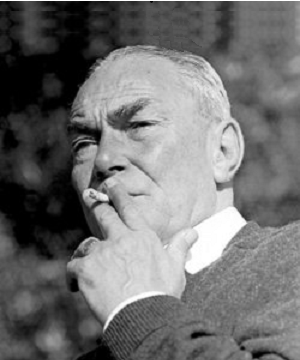






Spotlight on John Frederick Hayes

John Frederick Hayes
- Born: 1912
- Died: 7 May 1993
- Service Date:31 January 1994
- Disposition:Cremated Remains
- Cemetery: Rookwood
- Location:Lawn Grave 3 Grave 265
AUSTRALIA'S 1ST GANGSTER
A violent standover man and extortionist
John Frederick 'Chow' Hayes was born in the Sydney suburb of Paddington on 7 September 1911, the illegitimate son of Elizabeth Hayes. He was soon put into the care of his grandmother and an aunt and was brought up by them. He lived his early years in the inner-city suburbs of Chippendale and Haymarket.
Hayes rarely attended school after his eighth birthday, and earned a living as a newspaper seller in the area around Railway Square. As a teenager he became involved with gang-related crime in and around his local area, namely shoplifting, petty theft and assault. Hayes was known as a major player in the Sydney Gang Wars of the late 1920s and 1930s and was known to police as an extremely violent person. In February 1939, Chow Hayes was shot at Glebe and taken to Royal Prince Alfred Hospital. In a show of bravado, he discharged himself with the bullet still inside his body to avoid police interrogation.
Hayes' criminal career progressed as he grew older and became involved in larger robberies and stand-over extortion scams, which enriched his ego, but also gave him a very bad reputation with the general public and thus became a menace to the police. In 1929, Chow was aligned with Kate Leigh against Tilly Devine in the Razor Wars where he took part in a Razor fight at Kings Cross which involved approximately 50 of Australia's Sydney Gangsters.
Chow Hayes spent many years of his life in prison for a succession of crimes which included small felonies such as drunkenness and capital crimes such as murder. In 1938 he shot Henry Jack Baker, the de facto partner of Sydney crime czar Kate Leigh outside Leigh's home at Lansdowne Street Surry Hills, but he escaped prosecution.On New Year's Day 1945, he shot and killed a fellow Sydney gangster named Eddie Weyman (1915-1945), but he was later found not guilty at trial although in the David Hickie biography, Hayes admitted that he had indeed killed Weyman and got away with it. In 1951 he murdered a fellow gangster William 'Bobby' Lee (1915-1951) at a Sydney inner city nightclub in retribution after Lee had shot and killed Hayes's nephew Dennis James (Danny) Simmons in a case of mistaken identity. After hiding from police for six weeks, he (and his accomplice William 'Joey' Hollebone) was finally caught by the notorious Sydney detective Ray 'Gunner' Kelly. He was tried twice for this offence before he was finally found guilty at his third trial in 1952. Hayes served over fifteen years in prison for the murder of Lee.
He was freed from prison under licence in the mid-1960s, and was soon back extorting money from many of Sydney's most dangerous criminals, including crooked casino boss Dick Reilly and the 'king' of Sydney's brothel business Joe Borg. After spending over 30 years in prison at different times, Chow Hayes was released on 14 February 1977. All of his ill-gotten wealth was long gone, either wasted on gambling or on expensive legal costs. He lived out the rest of his life with no criminal convictions, and lived in a flat at Lidcombe.
John Frederick 'Chow' Hayes died in Lidcombe, Sydney on 7 May 1993 after a long battle with lung cancer.
His cremated ashes were placed in his wife's grave on 31 January 1994 at Rookwood Cemetery (Catholic Crematorium Rookwood Office). He was survived by his youngest child a daughter, Gladys Veronica "Little Topsy" Hayes Paxton (1939 - 2014).
Read lessJohn Frederick 'Chow' Hayes was born in the Sydney suburb of Paddington on 7 September 1911, the illegitimate son of Elizabeth Hayes. He was soon put into the care of his grandmother and an aunt and was brought up by them. He lived his early years in the inner-city suburbs of Chippendale and Haymarket.
Hayes rarely attended school after his eighth birthday, and earned a living as a newspaper seller in the area around Railway Square. As a teenager he became involved with gang-related crime in and around his local area, namely shoplifting, petty theft and assault. Hayes was known as a major player in the Sydney Gang Wars of the late 1920s and 1930s and was known to police as an extremely violent person. In February 1939, Chow Hayes was shot at Glebe and taken to Royal Prince Alfred Hospital. In a show of bravado, he discharged himself with the bullet still inside his body to avoid police interrogation.
Hayes' criminal career progressed as he grew older and became involved in larger robberies and stand-over extortion scams, which enriched his ego, but also gave him a very bad reputation with the general public and thus became a menace to the police. In 1929, Chow was aligned with Kate Leigh against Tilly Devine in the Razor Wars where he took part in a Razor fight at Kings Cross which involved approximately 50 of Australia's Sydney Gangsters.
Chow Hayes spent many years of his life in prison for a succession of crimes which included small ... More